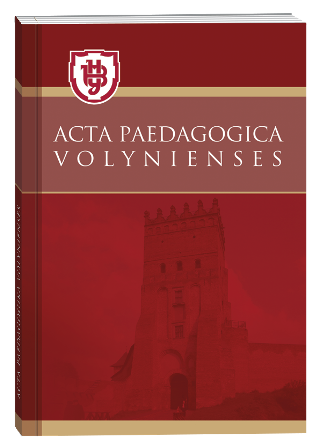THE FORMATION OF MONOLOGUE SPEECH OF ELEMENTARY SCHOOL STUDENTS IN THE CONDITIONS OF THE MEDIA CLASSROOM
DOI:
https://doi.org/10.32782/apv/2024.4.16Keywords:
media classroom, monologue speech, media content, literary samples, teacher’s exemplary speech, visualization tools, media education.Abstract
The article reveals the content and results of experimental training of elementary school students on the formation of monologue speech in the media classroom. The positive practices of the laboratory of elementary education of the Borys Grinchenko Kyiv Metropolitan University are highlighted. The author’s method of working on the formation of monologue speech of elementary school students in the conditions of the media office is revealed. The dependence of the level of development of monologue speech of primary school students on the frequency of using media educational materials in the media classroom was experimentally proven. The described experimental study covers all four years of primary school education and was conducted on the basis of 182 secondary comprehensive schools in Kyiv, where a high-quality media cabinet was created for primary school students. In the course of the experiment, it was determined that the criteria for determining the level of formation of monologue speech of elementary school students in the conditions of the media classroom are: motivational, cognitive, practical and behavioral (competent). In the process of research, it was established that the level of formation of monologue speech of primary school students will increase if a high-quality media classroom is functioning in the school. The school media classroom should be filled with a variety of equipment and teaching aids, such as computer tasks of various levels of difficulty aimed at the development of students’ monologue speech, as well as video recordings of the recitation of poems, fairy tales, prose by the teacher or by various actors and writers. Effectively use video recordings of exemplary recitation of literary samples by high school students. It is important to use audio-visual, model and visual means of teaching students in the media classroom in a relationship without giving preference to any of them, because in the teaching practice of modern primary schools, teachers often abuse audiovisual means of education, and this has a negative impact on the health of children of primary school age.
References
Вашуленко М.С., Вашуленко О.В. Українська мова. Буквар: підруч. для 1 кл. закладів загальної середньої освіти (у 2-х частинах). Київ: Видавничий дім «Освіта», 2023. 112 с.
Вітюк В. Наукові основи формування правописної компетентності майбутніх учителів Нової української школи: Монографія. Київ: Інтерсервіс, 2020. 424 с.
Вознесенська О., Сидоркіна М. Медіатворчість як складова сімейної медіаосвіти: використання ресурсів арт-терапії. Міжнародна науково-практична Інтернет-конференція «Медіаосвіта – пріоритетний напрям в освіті ХХІ століття: проблеми, досягнення і перспективи», 2013. [Електронний ресурс]. – Режим доступу: https://aup.com.ua/uploads/Zbirnuk_Harkiv.pdf#page=21
Паламар, Світлана Павлівна та Нежива, Людмила Львівна (2020) Методична модель застосування доповненої реальності на уроках читання в початковій школі. Педагогічна освіта: теорія і практика. Психологія. Педагогіка., 34 (2). с. 6-5. Пономарьова К. Українська мова. Буквар: підруч. для 1 кл. закладів загальної середньої освіти (у 2-х частинах). Київ: УОВЦ «Оріон», 2023. 112 с.
Сіранчук Н.М. Формування лексичної компетентності в учнів початкових класів на уроках української мови: Монографія. Київ: «Центр учбової літератури», 2017. 288 с.
Хижняк І., Пурис Г. Діагностика розвитку словникового запасу учнів початкової школи. NEW INCEPTION: науковий журнал. Національний університет «Чернігівський колегіум». Чернігів, 2023. Випуск 1-2 (11-12). С.27-38.







